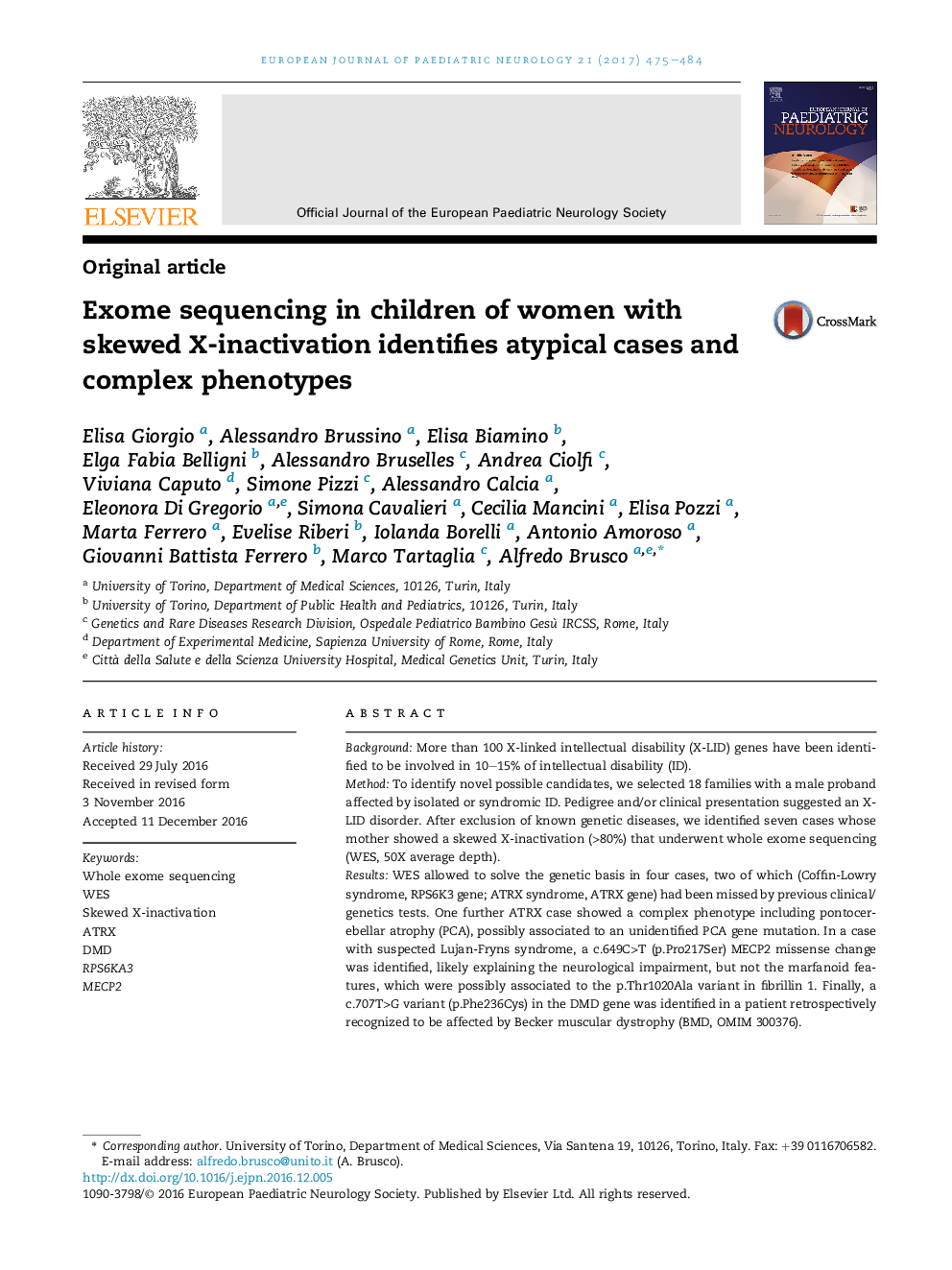| کد مقاله | کد نشریه | سال انتشار | مقاله انگلیسی | نسخه تمام متن |
|---|---|---|---|---|
| 5628880 | 1580000 | 2017 | 10 صفحه PDF | دانلود رایگان |

- Whole exome sequencing (WES) solved 4/7 cases with X-linked intellectual disability.
- Mutations identified by WES not always explained completely probands' phenotypes.
- Unbiased strategies (whole genome sequencing) are necessary to solve complex cases.
BackgroundMore than 100 X-linked intellectual disability (X-LID) genes have been identified to be involved in 10-15% of intellectual disability (ID).MethodTo identify novel possible candidates, we selected 18 families with a male proband affected by isolated or syndromic ID. Pedigree and/or clinical presentation suggested an X-LID disorder. After exclusion of known genetic diseases, we identified seven cases whose mother showed a skewed X-inactivation (>80%) that underwent whole exome sequencing (WES, 50X average depth).ResultsWES allowed to solve the genetic basis in four cases, two of which (Coffin-Lowry syndrome, RPS6K3 gene; ATRX syndrome, ATRX gene) had been missed by previous clinical/genetics tests. One further ATRX case showed a complex phenotype including pontocerebellar atrophy (PCA), possibly associated to an unidentified PCA gene mutation. In a case with suspected Lujan-Fryns syndrome, a c.649C>T (p.Pro217Ser) MECP2 missense change was identified, likely explaining the neurological impairment, but not the marfanoid features, which were possibly associated to the p.Thr1020Ala variant in fibrillin 1. Finally, a c.707T>G variant (p.Phe236Cys) in the DMD gene was identified in a patient retrospectively recognized to be affected by Becker muscular dystrophy (BMD, OMIM 300376).ConclusionOverall, our data show that WES may give hints to solve complex ID phenotypes with a likely X-linked transmission, and that a significant proportion of these orphan conditions might result from concomitant mutations affecting different clinically associated genes.
Journal: European Journal of Paediatric Neurology - Volume 21, Issue 3, May 2017, Pages 475-484